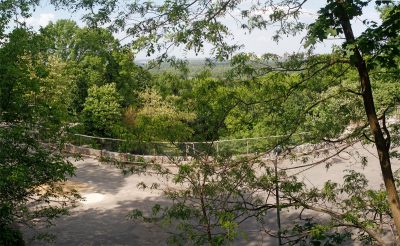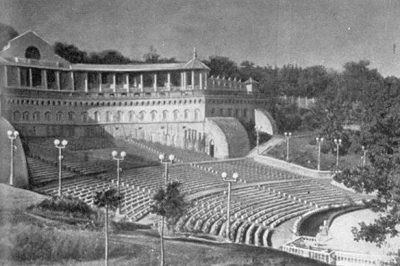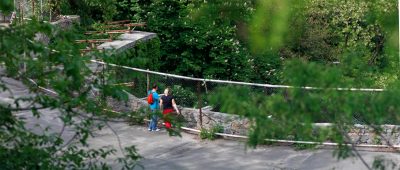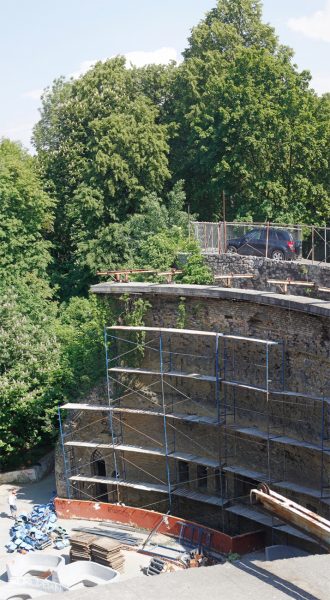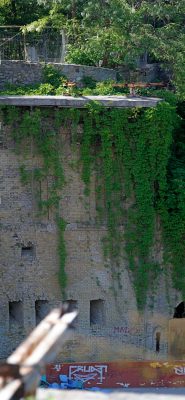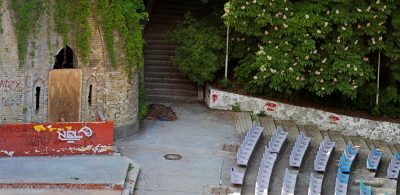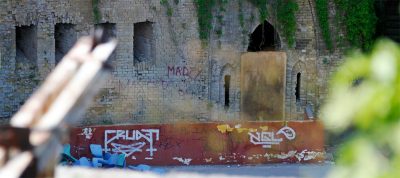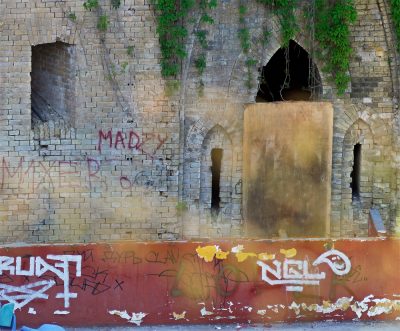Urban legends say it was built by Germans – Prisoners of WWII in 1949.
For those, who know where to look…
For those, who know where to look, a picturesque olden-time ruins shall suddenly appear in park situated on a steep bank of Dnieper river after 10-minute drive from Khreshatik, the main street of Kiev, Ukrainian capital.
Firstly ruins puzzle by its sheer size, then by its location in unpopulated park area and yet proximity to the city centre. Unlikely occasional pedestrian may wonder what is it and what it was made for? Huge demy-circle fortress or amphitheatre for several thousands of spectators? Surely, not the former, as unlike majority of soviet fortifications, this one is directed Eastward; besides this construction is prone to any would-be attack from hills above.
Though the correct question is: who made it? The story goes, it was built by German prisoners of WWII in 1949. And indeed, it used to be huge open-air theatre capable of providing 4000 seats simultaneously. They say as Kiev was ruined during WWII, it was convenient place then.
But why building a theatre? May be keeping morale of remaining population (mostly female) was of higher priority than constructing production or the extraction of raw materials, manufacturing industries, transport? From the other hand, there is no apparent logic in expensive construction of huge open-air theatre far from main roads and any proximity to public transportation, as it where in this area after the WWII.
What puzzles me, who may attend it, as back post-war times there were too few people left who were busy restoring ruined assets and lives…and they were to produce agricultural and other natural products for themselves, as well as on exchange for permitted 15 % of the industrial equipment in the western zones of Germany, controlled by the Soviet Union after WWII under the Potsdam Conference, August 1945.
Free labour and Currency Adjustments
May the explanation be in availability of free forced labour? In line with Yalta Conference (Feb.1945) allies agreed that Germany were to make reparations in industrial assets and forced labour, but not in money payments. And only after the Geneva Convention III (September 1949), application of force labour was regulated and rights of prisoners of war became more protected: forced labour of war prisoners should be payable (1/4 of Swiss Frank per day per each worker, and it was good money, as SFr was the only non-devalued currency of Europe at that time). In addition, medical personnel and officers should not be forced performing any work that did not comply with their profession; prisoners of war were compelled to do only certain classes of work.
But who did check? German prisoners stayed in the territory that is now Ukraine until 1955. Even now descendants of local residents – Ukrainians believe, that another well-known object – Kiev National Exhibition Centre – was constructed by German prisoners of war. But this is another story.
Kiev‘ Green Theatre on the 9 of May 2018
Now days infrastructure enables expanded affluent population spending time and money: there is net of roads, and Arsenalnaya subway station located nearby the Green Theatre. Soon the new occasion shall present itself: on the 25th of May 2018, with launch of renovated Green Theatre.
It is just one mile distance between Independence Square (Kreschatik street, Kiev) and the Green Theatre, if to draw the imaginary line on Kiev-city map. Yet it was thousands of miles from home for war prisoners who used to rebuild it and years for those who could return some of them home after defeat in WWII.
